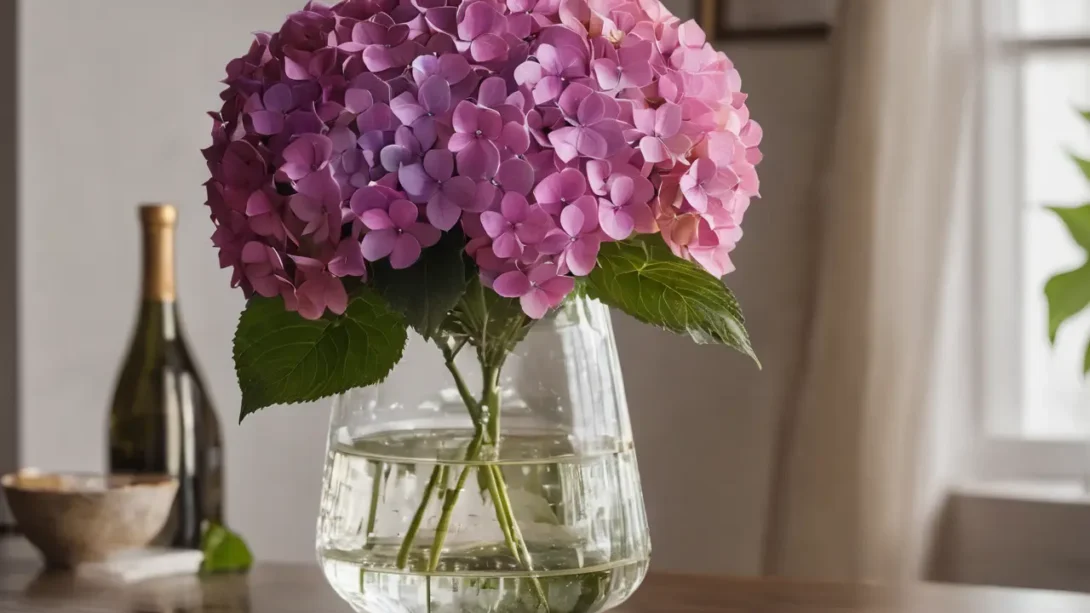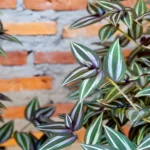Hydrangeas, with their lush foliage and voluminous blooms, are a favorite among gardeners and floral enthusiasts alike. These flowers come in a variety of colors, each capable of turning a simple vase into a stunning centerpiece. However, keeping hydrangeas alive and vibrant in a vase requires more than just placing them in water. Understanding how to properly care for these blooms can significantly extend their vase life, ensuring they remain a delightful addition to any room.
Selecting Hydrangeas for Your Vase
The first step in ensuring your hydrangeas thrive in a vase is selecting the right flowers. Whether you’re cutting them from your garden or choosing them at a florist, look for blooms with firm, sturdy stems and petals that are vibrant and full. Avoid flowers that show signs of wilting or browning, as these are indicators that the hydrangea is past its prime. The fresher the flower, the longer it will last in your vase.
Preparing Your Vase
Before arranging your hydrangeas, it’s crucial to prepare the vase properly. Choose a clean vase that complements the size and shape of your hydrangea arrangement. A too-small vase can crowd the stems, hindering water uptake, while a too-large vase may not provide enough support for the blooms. Clean your vase thoroughly with soap and water to remove any residue or bacteria that could harm the flowers. Fill the vase with fresh, clean water, and consider adding a floral preservative. These preservatives can provide the nutrients hydrangeas need to thrive and help keep the water free of harmful bacteria.
Preparing Hydrangeas for the Vase
Once you have your vase ready, it’s time to prepare the hydrangeas for their new home. Start by cutting the stems at a 45-degree angle, which increases the surface area for water absorption. For the best results, do this under running water to prevent air from entering the stems. Remove any leaves that will sit below the waterline to reduce bacterial growth and ensure all water goes directly to the flower. For thick stems, consider splitting or smashing the ends to further enhance water uptake. This might seem counterintuitive, but it allows the hydrangea to absorb more water, keeping the blooms hydrated and healthy.
Water and Hydration Tips
Hydrangeas are particularly thirsty flowers, and maintaining proper hydration is key to keeping them alive in a vase. Use lukewarm water in the vase, as it is absorbed more efficiently than cold water, ensuring your hydrangeas stay hydrated. Change the water every two days to keep it fresh and free from bacteria that could cause the stems to rot. When changing the water, consider adding a teaspoon of sugar and a few drops of bleach to the water. The sugar acts as food for the flowers, while the bleach keeps the water clean. Alternatively, floral preservatives, available at florists and garden centers, can be used to provide nutrients and antibacterial properties.
Placement and Environment
The placement of your vase can significantly affect the lifespan of your hydrangeas. Choose a spot away from direct sunlight, which can cause the flowers to dehydrate and wilt prematurely. Similarly, avoid placing your vase near heat sources or in drafty areas, as extreme temperatures and airflow can stress the flowers. Ideally, hydrangeas thrive in a cool room with consistent humidity, which helps keep the blooms hydrated and vibrant.
Reviving Wilted Hydrangeas
Even with the best care, hydrangeas may occasionally wilt. Fortunately, they can often be revived with a simple trick. First, re-cut the stems at a 45-degree angle under water to ensure they’re not blocked by air bubbles. Then, fill a sink or basin with lukewarm water and fully submerge the hydrangea blooms for about 45 minutes to an hour. This process, known as “hydrating,” allows the petals to absorb water directly and can often bring wilted hydrangeas back to life. After hydrating, arrange them back in the vase with fresh water and a floral preservative to help maintain their revived state.
Ongoing Care and Maintenance
To ensure your hydrangeas remain vibrant in their vase, a little daily attention goes a long way. Check the water level daily, as hydrangeas can drink a lot, especially in the first few days after cutting. The water should remain clear; if it starts to look cloudy, it’s time to change it, even if it hasn’t been two days. This prevents bacteria from harming the stems and reduces the risk of wilting.
Regularly inspect the stems and flowers, removing any that are starting to wilt or show signs of decay. This not only keeps your arrangement looking fresh but also prevents the spread of bacteria to healthy blooms. If the arrangement starts to look sparse, consider trimming the stems again and rearranging the flowers to give it a new lease on life.
When to Remove Spent Flowers and Trim Stems
As time passes, some hydrangea blooms may naturally begin to wilt and fade. Remove these flowers to focus the plant’s energy on maintaining the vibrancy of the remaining blooms. Every few days, give the stems a fresh cut to help them better absorb water. This can be particularly effective after changing the water, ensuring the flowers can hydrate efficiently.
Signs That Your Hydrangeas Are Nearing the End of Their Vase Life
Despite the best care, hydrangeas will eventually reach the end of their vase life. Signs include persistent wilting, brown or crispy petals, and stems that become slimy or discolored. At this point, it’s time to compost the old blooms and perhaps start anew with fresh hydrangeas.
Conclusion
Keeping hydrangeas alive in a vase is a rewarding endeavor that brightens any space with their large, colorful blooms. By carefully selecting and preparing your flowers, maintaining proper water conditions, and providing ongoing care, you can extend the beauty of your hydrangeas far beyond their expected vase life. Whether you’re a seasoned gardener or a floral enthusiast, these tips will help you enjoy vibrant hydrangea arrangements that reflect the care and attention you’ve invested in them. Remember, the key to longevity lies in hydration, placement, and maintenance, ensuring your hydrangeas remain a stunning addition to your home or office.




